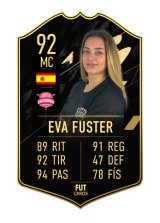In the rapidly evolving world of digital slot games, understanding the mechanics behind pattern formation is crucial for both developers and players. Pattern complexity, which refers to the intricacy and variety of symbol arrangements on the reels, significantly influences game engagement, visual appeal, and potential payouts. Among various factors that shape pattern complexity, symbol size stands out as a fundamental yet often overlooked element. This article explores how symbol dimensions impact pattern creation, drawing insights from modern examples like Golden Empire 2 community and beyond.
1. Introduction to Pattern Complexity in Digital Games
Pattern complexity encompasses the diversity and intricacy of symbol arrangements that appear during gameplay. It influences not only visual aesthetics but also the underlying mechanics that determine winning combinations. As game designers strive to balance excitement and fairness, the size of symbols on reels emerges as a pivotal factor. Larger symbols tend to create simpler, more recognizable patterns, while smaller symbols enable a richer tapestry of arrangements, increasing the potential for complex patterns.
Understanding how symbol size interacts with pattern formation helps in crafting engaging experiences that appeal to players’ desire for both clarity and complexity. This is especially evident in modern slot games, where visual design directly correlates with user engagement and payout dynamics.
2. Fundamental Concepts of Symbol Size and Pattern Formation
At its core, symbol size influences how symbols occupy space on a reel grid. Larger symbols cover more grid cells, reducing the variety of possible arrangements and often leading to straightforward, easily recognizable patterns. Conversely, smaller symbols allow for a higher density of different combinations, fostering complex pattern structures.
The relationship between symbol size and reel grid design is also critical. Developers often tailor grid dimensions—such as 5×3, 6×4, or more—to complement symbol dimensions. For example, a game with larger symbols may opt for a smaller grid to maintain visual clarity, while smaller symbols on a larger grid can create a dense, intricate pattern landscape.
Consider a simple example: a game with 1×1 symbols on a 5×3 grid can produce thousands of unique patterns, whereas a game with 2×2 symbols on the same grid drastically reduces possible arrangements. This variation directly impacts the game’s complexity and the player’s perception of randomness and fairness.
3. The Role of Symbol Size in Game Mechanics and Player Experience
Symbol size not only affects visual pattern complexity but also influences gameplay dynamics. Larger symbols can simplify gameplay by making symbol recognition faster, which enhances user engagement, especially for casual players. Smaller symbols, however, promote a more intricate experience where pattern recognition and strategic anticipation become more challenging, appealing to experienced players seeking depth.
From a probability standpoint, larger symbols effectively reduce the number of possible symbol combinations per spin. This can lead to higher payout probabilities for specific patterns, impacting the payout structure. For instance, a game like Golden Empire 2 uses varying symbol sizes to create moments of heightened excitement, balancing visual clarity with pattern complexity to maintain player interest.
Ultimately, the strategic choice of symbol size directly correlates with the game’s ability to deliver satisfying gameplay experiences and optimize payout schemes.
4. Symbol Size and Pattern Complexity: A Theoretical Perspective
Mathematically, pattern generation can be modeled through combinatorial algorithms that consider symbol dimensions and grid configurations. Larger symbols tend to limit the total number of unique arrangements, simplifying the pattern space. Conversely, smaller symbols exponentially increase possible configurations, leading to higher pattern diversity.
For example, if a reel grid contains N positions and each position can hold either a large or small symbol, the total number of patterns is a function of the number of symbol types and their sizes. Smaller symbols enable a greater variety of arrangements, fostering more complex and unpredictable pattern sequences.
Additionally, bonus features such as Wilds and Scatter symbols further influence pattern complexity. Wilds may substitute for other symbols, creating new pattern possibilities, while Scatter symbols can trigger unique arrangements when appearing in specific configurations. These non-obvious factors compound the effects of symbol size, shaping the overall pattern landscape.
5. Case Study: Golden Empire 2
Golden Empire 2 exemplifies the practical application of symbol size choices to enhance pattern complexity. The game features a range of symbol dimensions and interactive mechanics such as Wilds, Scatter symbols, and bonus conversions that contribute to its visual and functional richness.
In this game, varying symbol sizes—ranging from small, detailed icons to larger, emblematic symbols—play a vital role in creating a layered pattern structure. For instance, larger Wild symbols can cover multiple grid spaces, forming dominant pattern features that attract player attention, while smaller symbols facilitate intricate combinations that can lead to substantial payouts, including a maximum potential of €5,000,000.
The strategic use of symbol size variations in Golden Empire 2 demonstrates how pattern complexity can be crafted to maximize both visual appeal and payout potential, providing an engaging experience that balances randomness with design intent.
6. Non-Obvious Considerations and Advanced Insights
Beyond basic pattern formation, symbol size influences the flexibility and scalability of game design. Developers can manipulate symbol dimensions to adapt to different screen sizes and platforms, ensuring consistent user experiences across devices.
From an algorithmic perspective, symbol size impacts randomness and fairness. Larger symbols reduce the number of potential patterns, which can make outcomes more predictable if not carefully managed. Therefore, balancing symbol size is essential for maintaining perceived fairness and unpredictability.
Furthermore, thoughtful design involves balancing pattern complexity with player accessibility. Overly complex patterns may deter casual players, while overly simple arrangements risk monotony. Developers often employ a mix of symbol sizes and bonus features, as seen in Golden Empire 2, to achieve an optimal equilibrium.
7. Practical Implications for Game Developers and Designers
Designing symbol sizes requires careful consideration of the desired pattern complexity level. Smaller symbols can create intricate, rewarding patterns suitable for high-variance games, while larger symbols streamline gameplay, appealing to a broader audience.
Leverage symbol size to reinforce thematic storytelling and visual identity. For example, a game themed around ancient civilizations might use larger, ornate symbols for key icons, creating memorable pattern formations that enhance narrative immersion.
Successful examples, including Golden Empire 2, demonstrate how combining varied symbol sizes with dynamic bonus features can produce engaging, balanced gameplay experiences—an essential consideration for modern slot game design.
8. Future Trends and Innovations in Pattern Complexity and Symbol Design
Emerging technologies such as procedural design and artificial intelligence are opening new horizons for symbol size and pattern generation. AI-driven algorithms can dynamically adjust symbol sizes based on player behavior or game state, creating personalized experiences that keep players engaged.
The concept of dynamic symbol sizing—where symbols adapt in real-time—presents exciting opportunities for increasing pattern complexity and maintaining game freshness. These innovations promise to enhance player engagement and potentially improve game profitability by offering unique, adaptive experiences.
As these trends develop, balancing complexity with accessibility remains paramount. Developers must ensure that dynamic adjustments do not compromise fairness or clarity, making thoughtful design and testing essential.
9. Conclusion: Balancing Symbol Size and Pattern Complexity for Optimal Gaming Experience
Ultimately, the interplay between symbol size and pattern complexity is pivotal in shaping engaging, fair, and visually appealing digital games. Thoughtful manipulation of symbol dimensions enables developers to craft diverse pattern landscapes, from simple to highly intricate, tailored to their target audience.
Incorporating lessons from successful titles like Golden Empire 2 illustrates how balancing visual design with game mechanics enhances player satisfaction and maximizes payout potential. As technology progresses, embracing innovative approaches to symbol design will continue to push the boundaries of what digital games can achieve.
For game developers seeking to optimize pattern complexity, a strategic focus on symbol size—combined with advanced features and adaptive technologies—will be key to future success in the competitive landscape of digital gaming.

